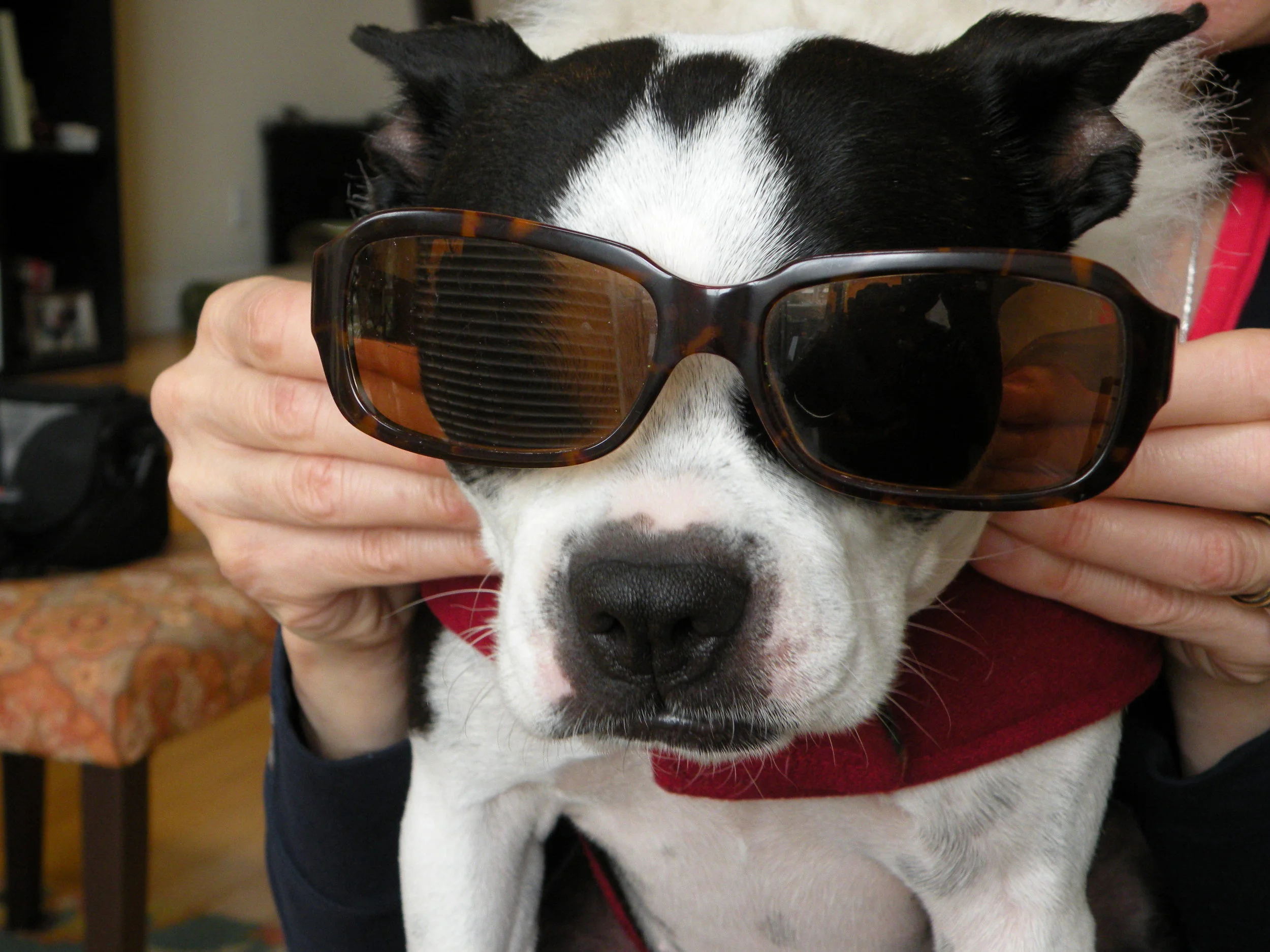Thursday night, prime time. You’re cuddled up on the couch with your pet and on comes a commercial starring that furry ambassador of flea-fighting, anti-depressants or bad-cholesterol busters. The well-trained animal hits his mark, spins in mid-air like a nimble ninja or lifts her head with just the right mournful lilt in an attempt to coax her catatonic master to play.
“That ain’t nothin’!” you say glancing down at your best pal who, without cues, wheels around and cocks her head at you. You’re both convinced: she could do MUCH better.
Leap aside, Lassie! Bow down, Benji! “My Baby Girl” is about to take Hollywood by tsunami.
Perhaps. But it takes a lot more than looks, charm or mastery of basic commands to soar in the commercial or entertainment world. And if, by chance, you happen to succeed beyond your wildest dreams, you could end up regretting what you wished for.
The acting business is just as competitive for animal characters as it is for humans. For even a remote chance at consideration, you’ll need a crisp, well-edited “reel” (CD) of your companion’s cutest looks, snappy tricks, acrobatics and a thorough demonstration of off-leash skills. The latter could involve hundreds of hours of specialized training which can run into big bucks (unless you are retired or are willing to quit your day job to do the intensive training yourself).
Animal actors need to start and stop on a dime, remember their “lines” and maintain laser-sharp focus to on- or off-stage cues. They must be outgoing, adaptable to the alternately frenetic and lolling pace of media production and friendly to other people and animals, without exception. Evidence of these skills must be exhaustively documented on your companion’s “reel” and resume which you’ll send out to targeted casting, talent and extras agencies (note that, in the absence of actual acting experience, the visual evidence of your fur-baby’s skill set must be that much more compelling!).
Though any animal can conceivably be trained to perform on set, dogs are considered much easier to train given their generally people-pleasing nature. A reliable behavioral bar against which to plot your canine companions’ disposition is the Canine Good Citizen (CGC) test.
Developed in 1989 by the American Kennel Club, the CGC is considered the gold standard for sterling behavior and includes assessments of how well your dog moves “politely” among strangers and other dogs and to what degree behavioral skills are carried over during “supervised separation” with another dog handler.
Once your pet is on set, you can rest reasonably assured that he or she will be safe and well-treated. This was not always the case. During the 1939 filming of “Jesse James,” starring Henry Fonda and Randolph Scott, a horse was plunged to its death off a cliff for dramatic effect. The incident provoked such outrage that the Motion Picture Association of America (MPAA), a powerful organization created to circumvent government censorship, conferred upon the American Humane Association (AHA) the legal rights to establish guidelines and oversee the treatment of animals on the set.
Ironically, the U.S. Supreme Court later ruled that the MPAA was practicing censorship by demanding that actors sign “morality clauses.” The MPAA’s clout was broken. As a result, the AHA was not allowed on sets to regulate the treatment of animals. Between 1966 and 1980 animal abuses on production sets resumed unabated. Following recorded atrocities on the set of the 1979 box office flop, Heaven’s Gate, however, the Screen Actors Guild saw that the AHA’s overseeing power was restored.
So what’s the pay? Animal actors can earn anywhere from a few hundred to several thousand dollars for a day’s work, depending on the scale of the production and the size of the budget. Skill level and experience also factor highly. Work can be sporadic. As a savvy pet owner/parent, you must carefully comb through your pet’s contract to ensure that things like subsidiary rights, travel expenses and food are covered. Unless your companion eventually makes it to the upper tier of animal actors, the financial return may not be worth the investment.
Stratospheric success may come at an additional cost. Unless you are your pet’s primary handler, you, your family and your pet may be spending much less time together, possibly damaging you human-companion animal bond and causing distress for everyone involved. In the end, you may have to choose between your pet as revenue source or a source of unconditional love.
In our family, it’s no contest.

